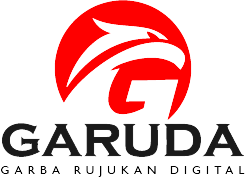PENGARUH BUDAYA ORGANISASI DAN KOMUNIKASI TERHADAP KINERJA KARYAWAN PADA PT. THE SERVICE LINE (SOS) PROJECT GEDUNG GRAHA ADHI MEDIA JAKARTA
DOI:
https://doi.org/10.34127/jrakt.v6i1.442Abstract
This study aims to obtain information to a deeper explanation of influence of organizational culture and communication on employee performance. And get the results from data processing about how much influence organizational culture and communication have on employee performance. The research method used is quantitative method, which is a method for studying the object of research by trying to explain the relationship between research variables using statistical calculations. Based on the analysis of the multiple linear regression equation between X1, X2, and Y is Y = 25.475 + 0.098X1 + (-0.0320X2) ……… e, this means that if there is an increase in Organizational Culture by 1 point, Employee Performance will increase to equal 1 point, the employee's performance will increase to 25.475 + 0.098 (1) = 25.573 and if there is an increase in communication by 1 point, the employee's performance will increase to 25.475 + (-0.032) (1) = 25.443. While the results of hypothesis testing with the t test, the results obtained from the organizational culture variable, the value of sig> 0.05 means not significant, while for the communication variable the value of sig> 0.05 means not significant. For the results of the organizational culture variable, the t value = 0.333 and t table = 1.688 and the results of the communication variable, the t value = -0.150 and t table = 1.688, meaning that partially, influence organizational culture has a positive and insignificant relationship between communication variables and employee performance. , while for the Communication variable there is no negative but insignificant relationship to employee performance. Simultaneously proving the hypothesis that Organizational Culture and Communication has an effect on employee ability where F count is less than F table (0.057 <3.26), which means that organizational culture and communication variables together have no and insignificant effect on employee ability. And based on the correlation coefficient analysis, the value of r = 0.57 shows that this value means that the two variables have a strong correlation (relationship). While the results of the coefficient of determination (R2) = 0.003, meaning 0.3%, while the remaining 99.7% is independent variables not not researched
Key Words: Organizational Culture, Communication And Employee Performance
References
A.Muri Yusup. (2014). Metodologi Penelitian Kuantitatif, Kualikatif Penelitian gabungan. Jakarta: Predanamedia Group.
Aaker, D. A. (2011). building strong brands.
Akhmad Subekhi, M. M & Mohammad Jauhar, S.Pd, 2012, Pengantar Sumber Daya Manusia (MSDM), Mei, Prestasi Pustakaraya.
Danim, S. dan yunan. (2010). administrasi sekolah dan manajemen. pustaka setia.
Dessler, G. (2015). Fundamentals of Human Resource Management (p. 3).
Edi Sutrisno. 2010. Manajemen Sumber Daya Manusia. Edisi pertama, cetakan pertama, Jakarta: Penerbit Kencana.
Graham, G. (2012). Manajemen Sumber Daya Manusia (p. 71).
Hasibuan, M. S. . (2012). Manajemen Sumber Daya Manusia.
Hasibuan, Malayu.S.p 2012 Manajemen SDM. Edisi Revisi, cetakan ketigabelas Bumi: Aksara.
Hasibuan, Melayu S.p 2010. Manajemen Sumber Daya Manusia. Jakarta: PT Aksara
Khoiri, M. (2013). Pengaruh Lingkungan Kerja Terhadap Motivasi Kerja Karyawan.
Kinicki. (2014). Prilaku Organisasi.
L.Mathis. (2011). Human Resource Management (edisi 10) : Salemba Empat.
Marwansyah. (2010). Manajemen SumberDaya Manusia Edisi kedua.
Moeheriono. (2010). Pengukuran kinerja berbasis kompetensi. Ghalia.
Moeheriono. 2010. Pengukuran Kinerja Berbasis kompetisi, Surabaya: Ghalia Indonesia
Munandar A.S. (2011). Psikologi Industri Dan Organisasi. Jakarta: Universitas Indonesia (UI-Press).
Nawawi. (2011). Manajemen Sumber daya Manusia.
Robbins, Stephen, p. dan coulter, mary. (2010). Manajemen (edisi kesepuluh). Jakarta: Erlangga.
Robbins. (2010). Manajemen (Edisi Kesepuluh). Jakarta: Erlangga.
Sudaryono. 2014. Budaya dan Prilaku Organisasi. Jakarta: Lentera Ilmu Cendikia
Sutrisno, E. (2010). Manajemen Sumber Daya Manusia. Kencana.
Veithzal Rivai, 2013, Manajemen sumber daya manusia Untuk Perusahaan Dari Teori Ke Praktek, Rajagrafindo Persada, Bandung.




